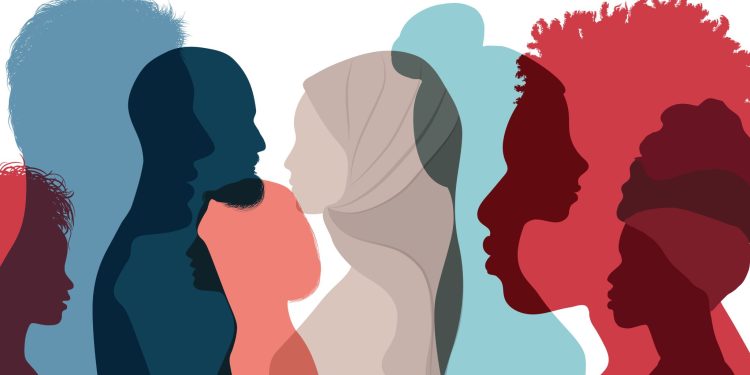(Note from Bree/Noodles: Originally, this post was prepared for Saturday, July 15th, Day of Visibility for Non-monogamy, so Dom will reference it below. My apologies to all the poly and non-monogamous folks for my poor planning in preparing everything and causing this post to miss the day. Nonetheless, I hope any writers who come across it looking for tips on writing polyamory will find it as helpful as I have, and thank you so much to Dom for taking the time to write it!)
Happy inaugural Day of Visibility for Non-monogamy, everyone!
It’s been a while since I wrote here about writing outside the gender binary. Today, July 15th, is a new celebration for non-monogamous people to increase visibility, community, and acceptance, so it seemed worthwhile to come back and cover tips to write non-monogamous characters.
As with gender, this is not the only process or advice you can use. Everyone is different, so use this as a jumping off point for how to think about and approach the topic broadly. Specifics may vary, or other non-monogamous creators could have differing ideas.
Got it? Good.
Let’s dive in!
Tip #1: Think about the relationship structure
Swinging. Polyamory. Relationship anarchy.
There are so many different labels and structures people use to organize their relationships. Many relationship structures are unique.
Let’s get some basic terms out of the way:
- Non-monogamy: relationships that do not conform to solely traditional monogamy (two people being married and exclusive with each other)
- Polyamory: the practice of having or being open to having more than one relationship (polyamory loosely meaning “many loves”)
- Polycule: like “molecule”, a polycule is a term for the structure of a relationship network and how every individual relates to others
- Metamour: your partner’s other partner(s), who you may or may not be friends/close with
This is just a sample of the vocabulary used by non-monogamous people to describe our lives. And these are concepts you can use to structure the experiences of your non-monogamous character(s).
Does your character have two partners? Three? Five or more?
Is your character married to one of their partners? Does anyone in the polycule have children? Does anyone live together or live far away from others?
These mundane arrangements of life (because people need to live somewhere, work, and eat) are going to affect your characters on a day-to-day basis. These structures of relationships can ease daily struggles—maybe a metamour can watch your kid while you work late—and also cause stress themselves.
That leads to the fun part for us writers: conflict.
Tip #2: Let conflict come organically
Ah, conflict. Whether it’s an old nemesis who’s come to town or a dragon in need of slaying, stories can have lots of problems for characters to tackle. Non-monogamy is no exception.
Keep in mind: Non-monogamy and traditional monogamy are no better or worse than each other. Non-monogamous people are no more likely than others to cheat, for example, and we’re not a danger to anyone. But we’ll get to more of that later.
Simply put, these relationships are central to your characters’ lives, and conflict is inevitable.
Maybe your character has two partners on opposite ends of the country or world. Maybe people in the polycule don’t see eye to eye about the proper use of magic or the political doings of the AI government. Maybe their calendar is just too hectic, and one or more relationship(s) suffer.
Like I was getting at, non-monogamous people are not more prone to conflict or jealousy than monogamous folks. But we’re not immune to it either.
When you’re building out a polycule as a writer, see where problems might naturally pop up between these people. Lean into that, however big or small the consequences may be.
Tip #3: Think about cultural influences
Like with gender, culture plays a big role in non-monogamy.
Non-monogamy has been practiced all throughout the world and over all of human history. European colonization forced monogamy onto many Indigenous cultures and communities of color. Therefore, those cultures deserve special recognition in the non-monogamy movement.
However, don’t confuse non-monogamy with polygamy. Polygamy is the practice of multiple marriages, which currently isn’t legal in much of the world. It usually gets associated with very traditional religious communities where women may have fewer rights.
That doesn’t mean polygamy can’t be healthy, loving, and fulfilling. Remember what I said about colonization enforcing monogamy.
Non-monogamy should center consent, open communication, and equality for all. Its intersection with culture is no exception, so think about how this affects your stories.
Is a character in an interfaith relationship? What about an interracial relationship? Do they live in a setting where non-monogamy is accepted?
Don’t forget intersectionality, especially with culture, gender, and sexuality too.
Maybe one character is nonbinary and pansexual while their partner is a cisgender asexual woman. Maybe they have multiple partners to fulfill their different sexual and romantic needs that just one partner couldn’t fulfill alone. Maybe the entire polycule worships the same gods in your fantasy setting, so they all get together to combine holiday rituals together.
Even if you’re monogamous, think of your partner, past partners, or other folks in relationships you know. How do they get around differences in culture, religion, political beliefs, etc.? Do those problems come up at certain times, like awkward holiday dinners, or do they find ways to combine their traditions into something unique to them?
These intersections are pretty similar whether your characters are monogamous or not. You’re just potentially adding more people, and that’ll change the equation for you as a writer, juggling all your characters.
Tip #4: Watch out for stereotypes and misconceptions
Just like with a lot of other identities, non-monogamous people have to deal with stereotypes and misconceptions.
Here are some broad ones you want to AVOID:
- Non-monogamous people are more likely to cheat.
- They’re all sex addicts who just want to have orgies all the time.
- Non-monogamous people hate monogamy.
- This is just something young people are doing.
- They’re all straight couples looking for a threesome.
- Anything that goes wrong in the relationship is proof that non-monogamy just doesn’t work.
- It goes against nature.
- Children shouldn’t be exposed to non-monogamy.
You might notice that a lot of these arguments are the same ones thrown at queer people. And you’d be right.
The non-monogamy and queer communities have a lot in common. That being said, not all non-monogamous people are queer and not all queer people are non-monogamous. There’s just some overlap for many, but not all.
And you can have characters who believe in these stereotypes. Villains, maybe. But if you have someone who does in your story, I really recommend you have AT LEAST one another who portrays a healthy, loving example and/or shows the other person that they’re wrong.
And just like with culture, use these misconceptions to inspire your characters and how they might subvert them.
You could have a polyamorous priest who has many romantic relationships, but he took a vow of celibacy. You could have a lesbian couple of space adventurers, and one falls in love with a single mom they meet on their travels. You could have a throuple (a relationship of 3 people all together) working together to raise the next Chosen One.
The possibilities are endless!
You just need to know what you’re subverting before you go and do it. And sensitivity readers never hurt either.
Tip #5: Do your research
Lastly, you just want to get some education before you go putting pen to paper or fingers to keys. If you’ve made it this far, you’re already doing great!
There are non-monogamous and polyamorous writers and stories already out there. Follow those authors! Pick up those books!
That doesn’t mean your story or your characters don’t belong. Non-monogamous love deserves to be on every shelf from romance to fantasy to horror and more!
There are also organizations and people out there you can follow and support. Here are some suggestions:
- OPEN
- @gabalexa
- Leanne Yau
- @polyamfam
- Vaela & Micah (author duo)
I hope this has helped you get a grasp on what non-monogamy and polyamory are, as well as how they can enrich your characters and your stories.
Again, happy Day of Visibility for Non-monogamy! May your word count and the love you receive be plentiful.







Your non-binary advice was very helpful to me and this is just as good! Thank you so much for giving me this foundation to expand my characters and worlds from.